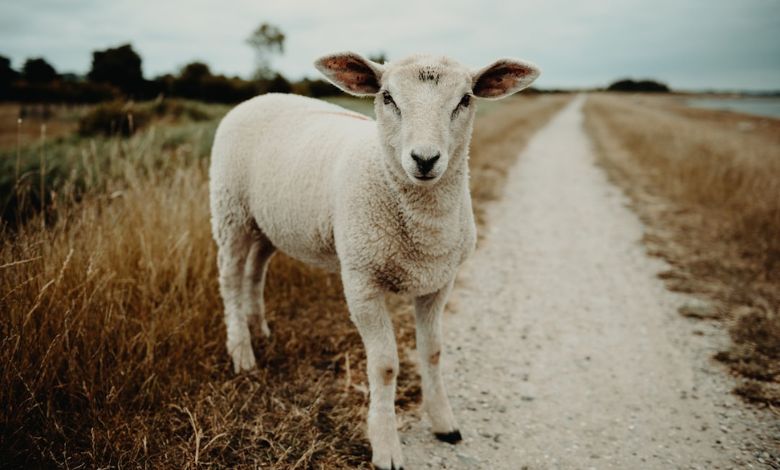Ever wondered, “What part of the sheep is asphalt made from?” Discover the truth behind this bizarre myth and how it all started.
Ever wondered, “What part of the sheep is asphalt made from?” Let’s dive into the story behind this strange myth and figure out how it all began.
Have you ever seen or heard something so odd that you stopped and thought, ‘Is that real?’ That happened to me when I saw the question: “What part of a sheep is used to make asphalt?” Seriously? Sheep? Asphalt? My first reaction was to laugh, but then I got curious. How did this rumor even start? And what’s the actual truth about how asphalt is made?
Interestingly, this kind of curiosity is what drives business model innovation, challenging assumptions, questioning the norm, and finding unexpected connections. So, let’s break it down. We’ll take a quick trip through the history of road-building and some odd modern myths to figure out what’s really going on. Spoiler alert: Asphalt has nothing to do with sheep, but they’re still going to play a small role in this story.
Article Breakdown
The Origins of the Myth: Why Sheep?

First things first: where did this sheep-asphalt idea come from? Honestly, it’s a bit of a mystery. It could be the result of a playful meme, a misunderstanding of materials, or just the internet being, well, the internet. But it’s not entirely out of character for people to associate animals with unexpected industries. After all, lanolin, a substance derived from sheep’s wool, is a key ingredient in many skincare products. Maybe someone jokingly stretched that idea a little too far and decided sheep must also play a role in road construction.
Or perhaps this is one of those cases where a joke spirals out of control. Picture this: someone at a trivia night sarcastically claims asphalt comes from sheep, and the next thing you know, it’s a Google search trend.
If nothing else, it’s a testament to our collective curiosity. So, let’s get down to the facts and set the record straight.
What Asphalt is Actually Made From
Here’s the lowdown on asphalt. It’s a material you encounter every day, on roads, parking lots, airport runways, but you might not know what’s in it. Spoiler: it’s not wool, hooves, or any other sheep-related byproduct.
The Ingredients of Asphalt:
- Aggregates: This is the fancy term for crushed rocks, sand, and gravel. Think of these as the “bones” of asphalt, providing structure and durability.
- Bitumen: This is the black, sticky substance that binds the aggregates together. Bitumen is a byproduct of petroleum refining, essentially, it’s the gooey stuff left over after crude oil is processed.
The Manufacturing Process:
Making asphalt is surprisingly straightforward. The aggregates are heated to remove moisture, then mixed with hot bitumen to create a viscous, pliable material. This mixture is transported to construction sites, where it’s spread out and compacted to form a smooth, durable surface.
A Fun Historical Tidbit:
Did you know that asphalt has been used for thousands of years? Ancient civilizations like the Babylonians and Egyptians used naturally occurring bitumen to waterproof their boats and seal buildings. The Romans took it a step further, using asphalt to construct roads that are still partially intact today. Now that’s some serious longevity.
Why Sheep Have Nothing to Do With It
So, back to the burning question: what part of the sheep is asphalt made from? The short answer is… none. Nada. Zilch. Sheep don’t contribute anything to asphalt production, not their wool, not their hooves, and certainly not their milk (though I’ll admit the image of a sheep in a hard hat is pretty amusing).
Addressing the Lanolin Misconception:
Some might wonder if lanolin, the oil extracted from sheep’s wool, could somehow be involved. After all, lanolin is used in everything from cosmetics to rust prevention. But no, it’s not a secret ingredient in asphalt. Bitumen, the true binding agent, comes from petroleum, not animals.
Why the Myth is Relatable:
In a way, it’s easy to see how this myth gained traction. We live in a world where unusual materials find their way into unexpected places. (Looking at you, avocado-based ice cream!) But when it comes to asphalt, the science is pretty straightforward, and entirely sheep-free.
A Tangential Fun Fact: Sheep Are Involved in Construction… Sort Of
Okay, so sheep don’t contribute to asphalt. But they’re not entirely irrelevant to the construction world. In some regions, sheep are used as eco-friendly lawnmowers to clear vegetation from construction sites. They’re cost-effective, sustainable, and adorable, what’s not to love?
And here’s another fun fact: sheep’s wool is sometimes used as insulation material in eco-conscious building projects. It’s natural, renewable, and an excellent thermal insulator. So while sheep don’t pave our roads, they still contribute to the built environment in their own woolly way.
From Confusion to Clarity
When I first encountered the sheep-asphalt myth, I was genuinely puzzled. I even did a double-take while scrolling through my phone. Could there be some obscure truth to it? After all, stranger things have happened. (Who knew pineapples take two years to grow?!)
So, I dove into the research. I read about asphalt production, learned about its ancient history, and even explored the weird and wonderful uses of sheep products. Along the way, I gained a newfound appreciation for the everyday materials that make up our world. Asphalt, for example, might seem mundane, but its creation is a fascinating blend of geology, chemistry, and engineering.
And let’s not forget the joy of debunking myths. There’s something deeply satisfying about separating fact from fiction, especially when the fiction involves sheep.
Why This Matters: Understanding the Everyday
At this point, you might be wondering: why does any of this matter? Why spend time debunking a silly myth about sheep and asphalt?
Here’s why: Understanding the materials and processes that shape our world gives us a deeper appreciation for them. It’s easy to take things like roads for granted, but when you pause to consider the ingenuity and effort behind them, they become a little more remarkable.
Plus, separating fact from fiction is a crucial skill in today’s information-saturated world. Whether it’s a meme about sheep or a headline about a scientific breakthrough, critical thinking helps us navigate the noise and find the truth.
Key Takings
- So, what’s the takeaway here? Asphalt isn’t made from sheep.
- It never has been, and it probably never will be.
- The myth is just that: a myth, born from humor, confusion, or perhaps a combination of both.
- But in a way, this quirky question has done its job.
- It sparked curiosity, led to a deeper understanding of asphalt production, and even highlighted some surprising ways sheep contribute to the world of construction.
- So the next time you’re driving down a freshly paved road, you can confidently say: “No sheep were harmed in the making of this asphalt.”
- And if you ever hear someone repeating the myth, feel free to share the real story, or just smile and let them wonder.
Useful Articles:
- The Advancement of Asphalt Pavements Over the Last 50 Years: Explore how the asphalt industry has evolved to meet modern demands, with insights from the National Asphalt Pavement Association.
- How the Babylonians Invented Asphalt: Discover the ancient origins of asphalt and its historical significance, as detailed by NPR.
- Sheep’s Unexpected Contributions to Human Health and History: Learn about the surprising and fun uses of sheep products beyond the ordinary, shared by Farm Flavor.



